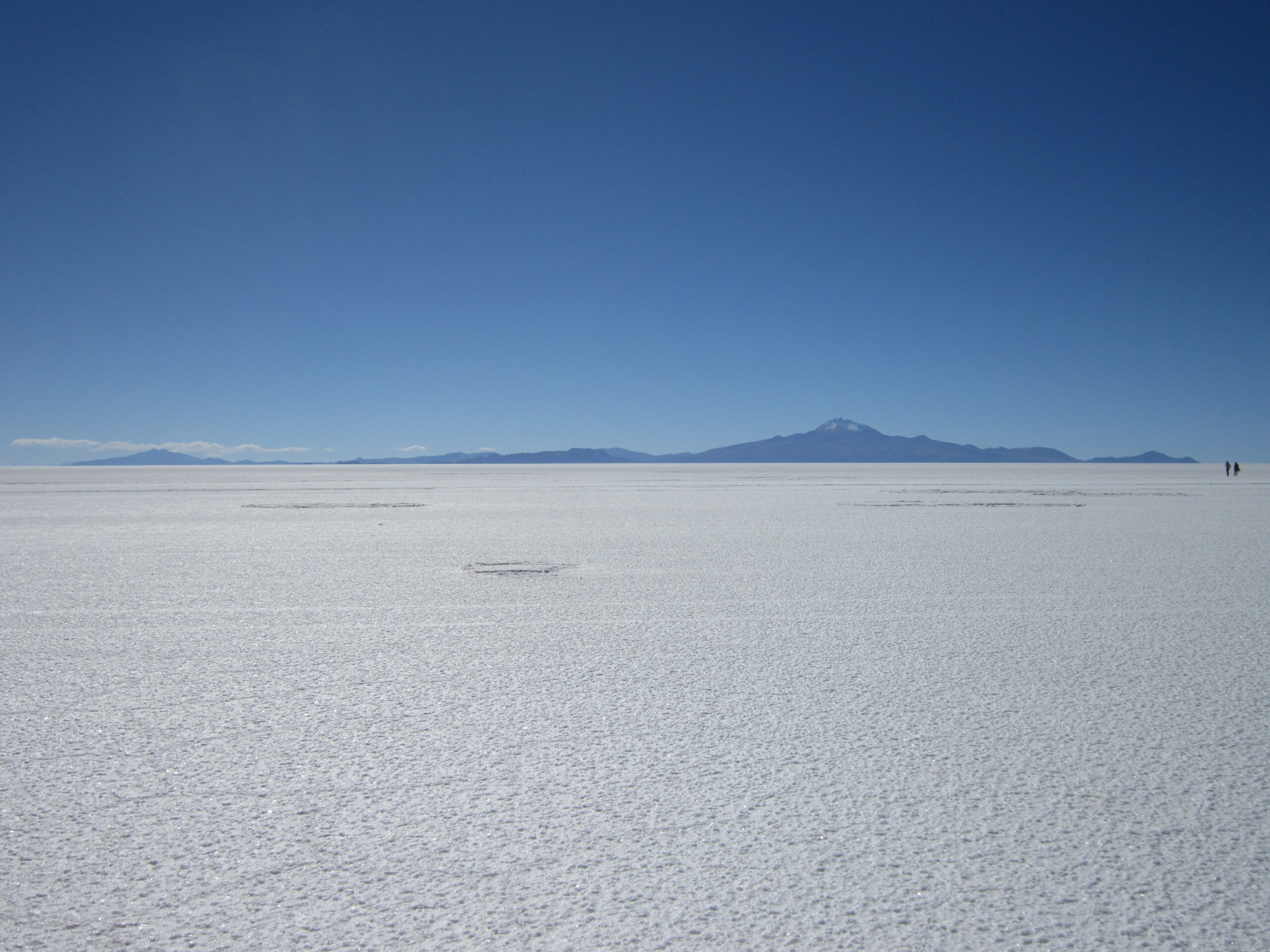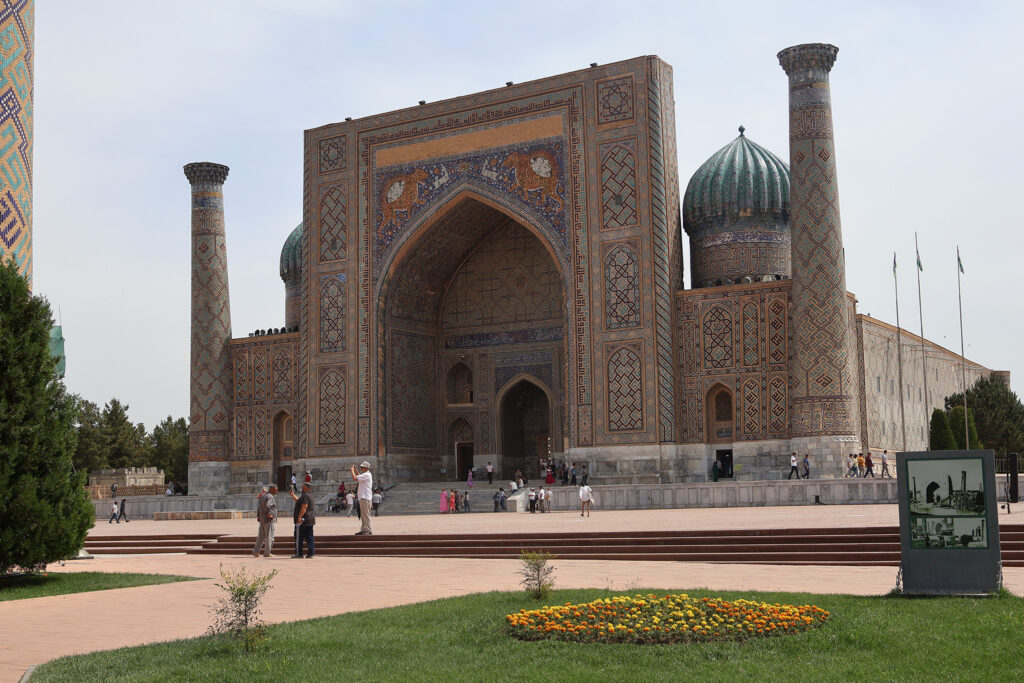
For the new high speed trains, initially just from Tashkent to Samarkand in the south, then recently extending the line further west to Bukhara, Uzbekistan went ahead and build a whole new train station to help showcase the feat of Spanish engineering. Yep, the Spanish are credited for building these trains. Looking at the time, I couldn’t but wonder if the train would need to stop for a couple of hours in the afternoon for a lazy little rest.
The new station has all what you’d expect in a modern train station; there’s a handful shops for drinks and supplies while waiting, nice shiny new toilets, and one door entrance of concern with a sign over head that read “tahoratxona”, which Google Translate told me meant “Doom”. Don’t go in there unless you have the One Ring!
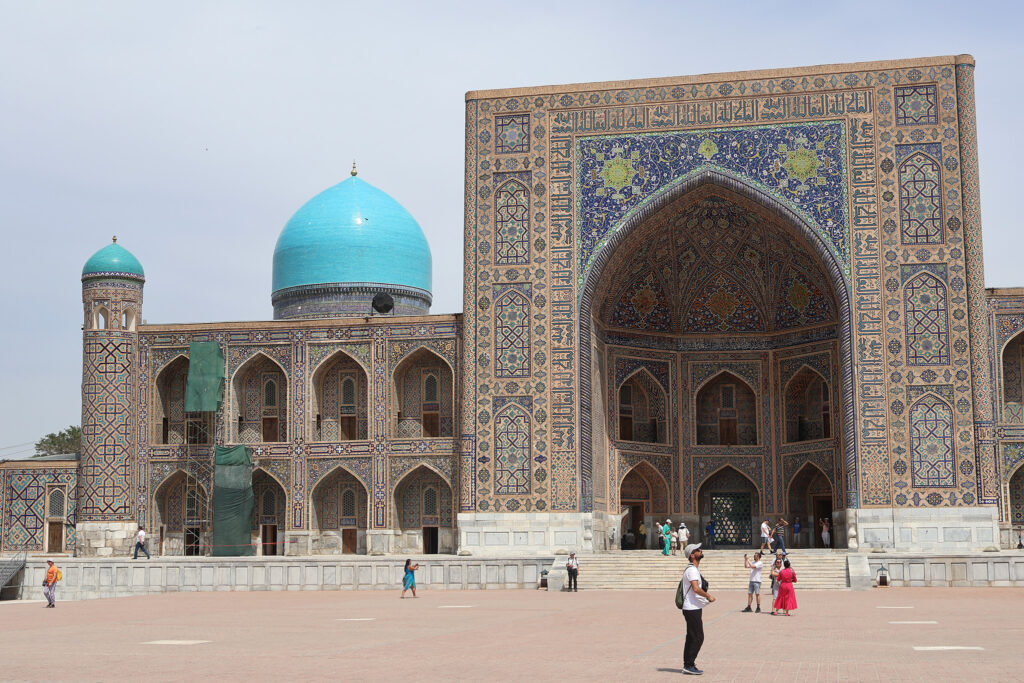
The fast train, or Afrosiyob, was absolutely glorious. Granted, I’m comparing to the Soviet era bunk bed seating of the slow train, but these are really nice trains. Comfy seats, overhead TV playing weird foreign TV shows, in train wifi for internet (only if you have an Uzbek mobile number, sadly), and a food and drink trolley that comes around every hour. And in a strange flash back to catching the coaches in Argentina, we all got free snacks in a surprise baggy – I got a croissant filled with jam, a cookie, and a cupcake! Everyone’s a winner on the Afrosiyob!
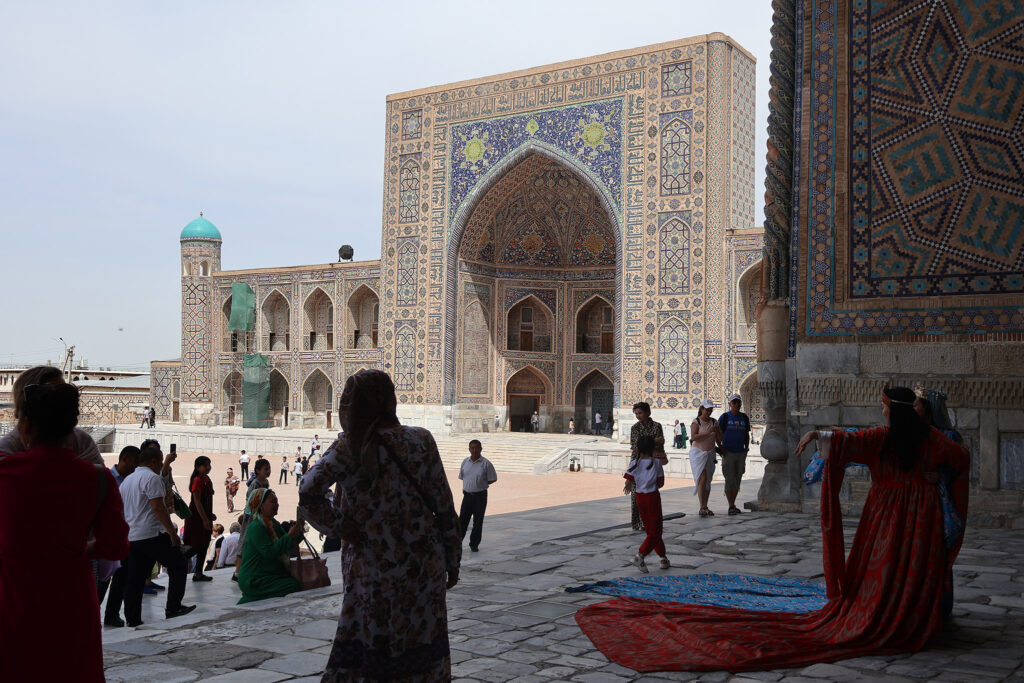
Catching a taxi from the train station to the old city of Samarkand reinforced one confusing aspect of taxi drivers I’d encountered every single time so far; giving larger than the amount of the fare confuses them. Just to be clear, if a fare was 70,000som, and I only have two 50,000som notes, you’d expect they’d just give the change. Instead, they’ll give back the second 50,000 and explain what the fare is. Yeah I know the fare, we use the same numbers after all, I just want you to give me the change! Every time I’ve had to explain that’s all I have, now you give me the difference in change. It’s so weird.
The host of the hotel, situated in the old town of narrow streets and mud brick homes that have huge ornate double doorways for their entrance, was another model of hospitality. Arriving at 10pm, I was quickly given a pot of tea and a plate of kumquats, as he filled out the paper work to checked me in. Looking around the main dining room, was a giant fish tank filled with a variety of fish, and outside in the garden courtyard birds chirped merrily in a mix of aviaries.
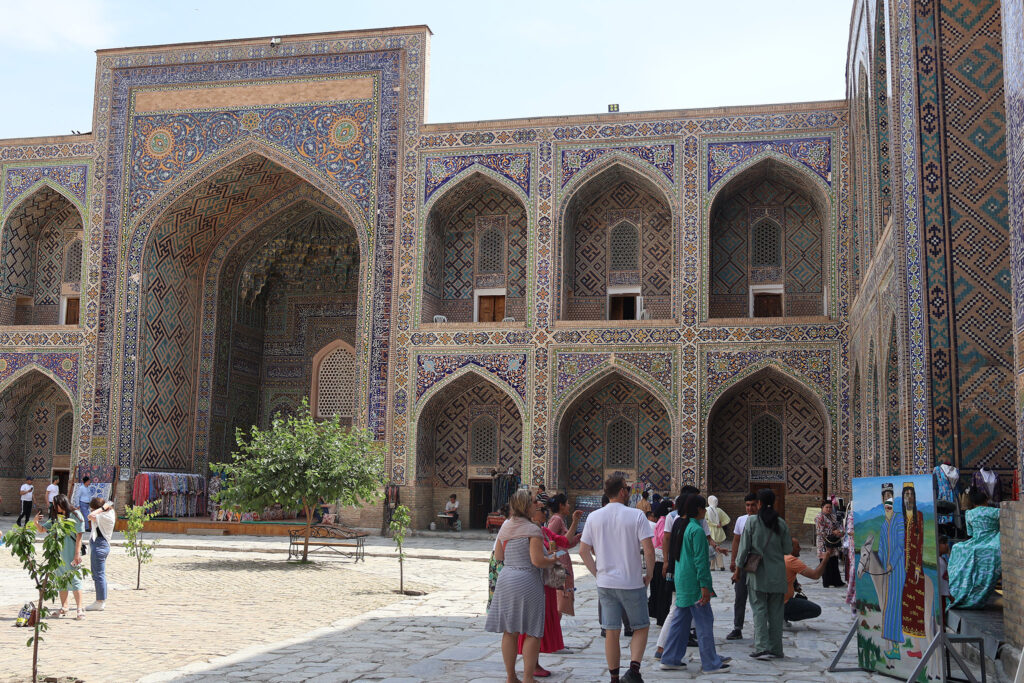
The next morning it was time to visit biggest attraction in Samarkand – The Registan.
While Amir Timur is the countries greatest immortalised conqueror, his grandson didn’t live up to be a great ruler. Ulugh Beg had no interest in ruling an empire, his aspirations were grounded in academia, and a love of science and learning. Ulugh was a great mathematician, and even greater astronomer.
The Registan square dates back to the 9th century, built around the tomb of the saint Imam Muhammad ibn Djafar. By the 14th century it became the city centre of commerce, and in 1417 Ulugh built the first madrasa here – a place of learning.
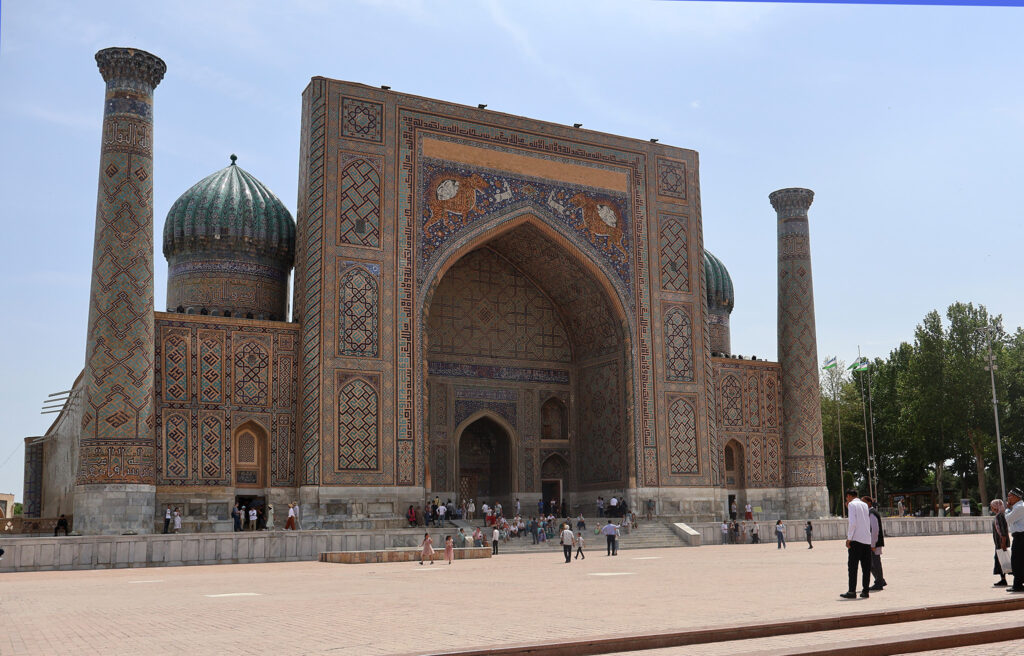
Our mate Ulugh Beg not only loved his science and the desire to learn, he wanted everyone to be able to learn. Not just the rich. Not just the men. Everyone. All forms of science, and real science not tainted by religious doctrine, were taught. He continued to build another two huge madrasa here, each building housing 10 teachers, and each teacher educating 10 students.
It is the duty of every true Muslim, man and woman, to strive after knowledge.
Ulugh Beg, 1417
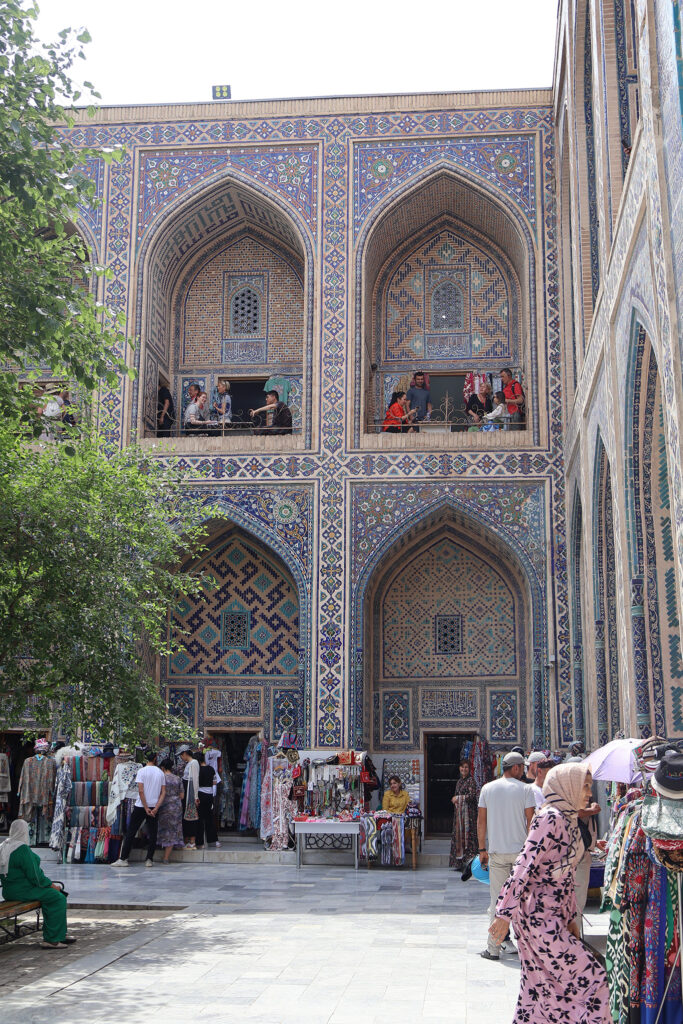
It’s hard to not say the Registan is a truly remarkable sight. Visually it’s inspiring. Awe inspiring. But for me, knowing Ulugh built this to spread knowledge and science to all is what the most truly inspiring aspect. So respected is Ulugh Beg, as a person of learning, can be seen by all the universities and schools named after him throughout Uzbekistan.
I have to mention the ticket office to get into the Registan. It only had one poor girl working, and there were a tonne of people waiting for tickets for their tour groups and school excursions. Honestly, every historic site on this trip has had swarms of small children and their teachers on an excursion. When I finally got to the counter she was in high spirits and told me to take my time looking around. And not bad advice, considering the ticket was the most expensive admittance price so far, and on top of that, there was an additional charge for using a camera!
I had already made several changes to my original itinerary, cutting out some places that I now realise are just logistically not viable to get to, therefore making the stays in the major cities a slower and longer visit. With that in mind, I decided to see one more historic site for the day and strolled down the main road to Amir Timur’s tomb.
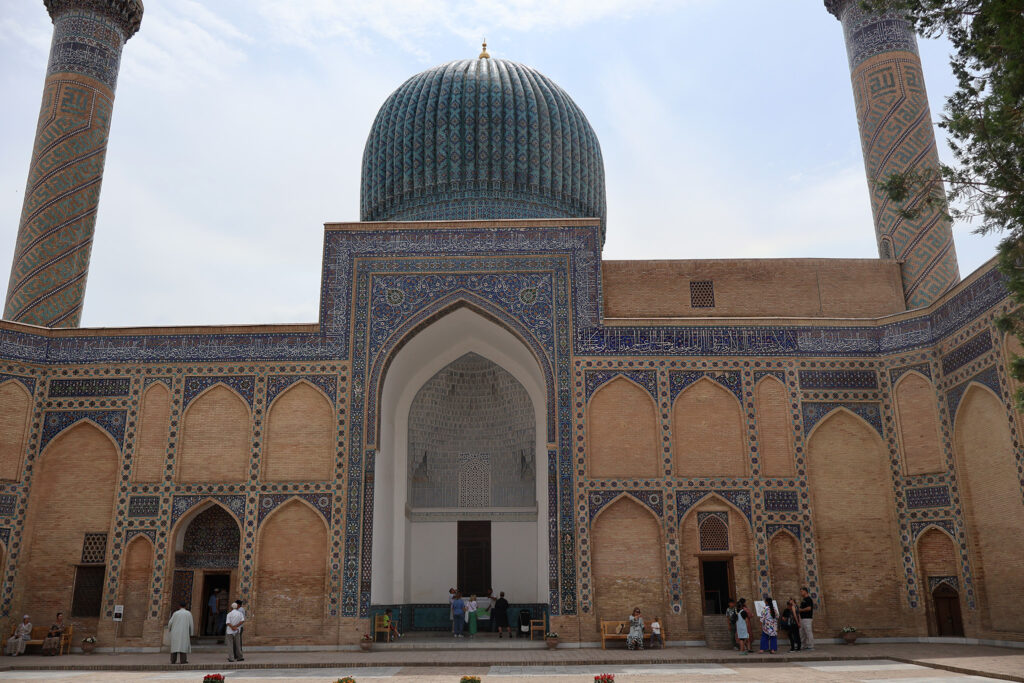
The tomb was actually build by Timur for his grandson, Muhammad Sultan in 1404, who was meant to be his successor. And a year later, Amir Timur himself died and was also buried here (despite his wishes to be buried in this home town of Shakhrisabz).
This soon became a necropolis for the Timur family, as subsequently Timur’s two sons, Miranshah and Shahrah, were buried here also. And finally, Ulugh Beg was the last Timur to find his resting place on this site.
Up next, Amir Timur’s wife builds a mosque.
